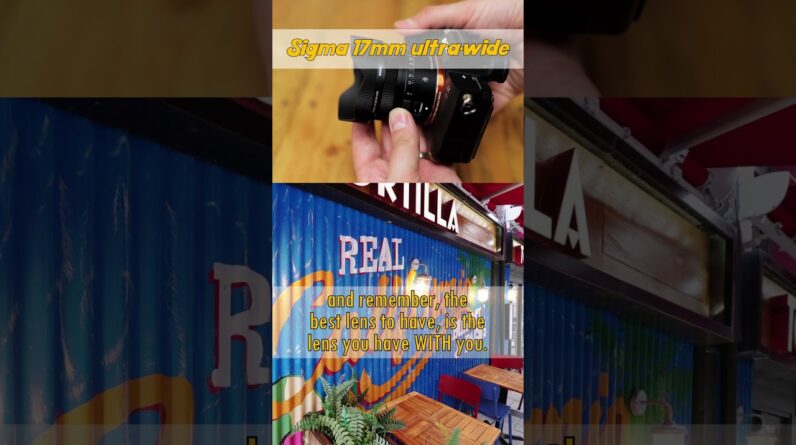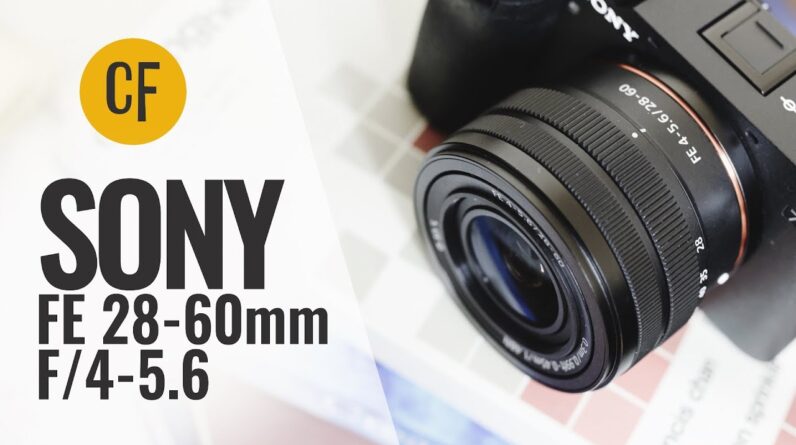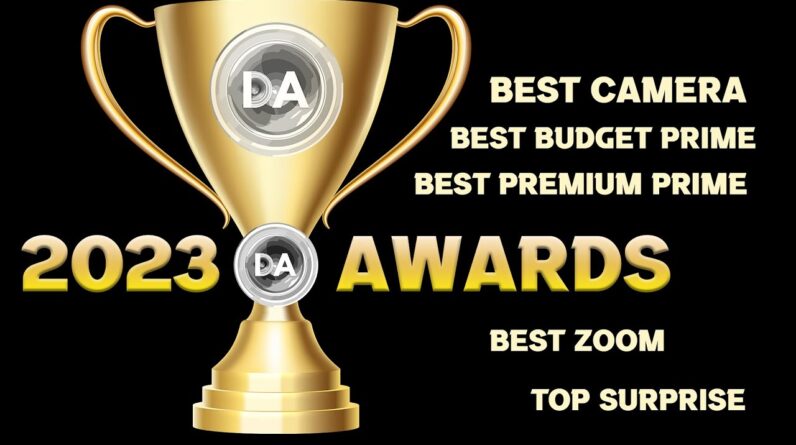[Music] Foreign Hi I'm Dustin Abbott and I'm here today To give you a quick video overview of The samyang series 2 lenses and Hopefully maybe just give a little bit Of clarification as to the second Generation of lenses what has changed And why you should or should not Consider them as a part of that so a Quick background on the series one or The original lenses and that was Samyang's basically first generation of Auto focusing lenses and so that Included lenses like the 14 millimeter F 2.8 35 millimeter F 1.4 50 millimeter F 1.4 and then 85 millimeter F 1.4 all of Which I have reviewed in the past so if You want information on those lenses Most of which can still be purchased at A reduced price You can check out my reviews of those Lenses and I review them on and on Multiple systems Um and most of them I did review on Sony Fe but there's a couple of these that I've got demonstrated here that were Actually for Canon RF and that was a Unfortunately a narrow window in that They provided some autofocus Alternatives to Canon lenses on the RF Mount but unfortunately Canon pretty Much quickly mixed that and to this Point I've continued to shut off
Third-party development so these lenses Are great if you can get them but Unfortunately they are discontinued That's not true on the Sony Fe platform However where they are still available So what was great about the original Samyang AF lenses is that first of all Of course samyang prior to that had been A strictly manual focus hello and Goodbye Nala Before that point samyang had been a Strictly manual focus uh lens company And so it did provide some Auto focusing Lenses on particularly on the Sony Platform really before there were any oh A third-party alternatives to more Expensive Sony lenses so at that point There was still no Sigma or Tamron you Know primes to uh to accommodate at that Point so it allowed you to have lens Options at a much cheaper price and Typically they had good Optics with Subpar autofocus either in the quality Of the focus or in the consistency of The focus and that was steadily improved However as I watched by via firmware Though that did require the samyang Lin Station and software to update the Firmware but they did continue to Improve Auto Focus performance and and I Could see that you know kind of carry Over into what they call their tiny Series which were much smaller lenses With smaller maximum apertures but you
Could see that continual refinement of Autofocus that was taking place the Series 2 lenses leveraged in many cases Some of the existing Optical formulas With some tweaks or improvements and in Some cases some actual steady Improvements but they also added a lot Of other features into the mix improved Autofocus improved build technology now The new versions of the lens tended to Be a little bit more Compact and lighter Though not in every case the 35 Millimeter F 1.4 for example and the Mark 1 version it was ever so slightly Larger just a little bit wider in Diameter 75.9 millimeters versus 75 Millimeters but both lenses were long 115 millimeters in length and in that Case it well the series one lens weighed 645 grams while the new lens was 659 Grams I don't actually have that lens Here I didn't have a chance to review it I missed out on doing that however it Was had a lot of the similar Improvements that I'm going to highlight Here in the series two lenses but it um You know carried on basically the same Optical formula as previously which was Quite a good Optical formula but with a Few tweaks to improve it a little bit More in the series too but with these Other lenses for example the 50 Millimeter F 1.4 the Mark 1 lens weighed In at 585 grams the new version weighed
In at 420 grams and it was about nine Millimeters shorter likewise with the 85 Millimeter lens the series one lens Weighed in at 568 grams while the series 2 lens was only 509 grams and so we saw Kind of a steady shaving off and always Making these to be kind of the lightest Lens in the class outside of the 35 Millimeter F 1.4 now included in this Mix because it's part of the kind of the Same design philosophy and coming out at The same time is the 135 millimeter F 1.8 now there was no mark one of that Lens but it's of the same design Philosophy so I've displayed it here and It basically inherited all of the Similar kind of feature upgrades that I'm going to talk about here but Obviously this was a new design as far As having an autofocus lens I have Thoroughly reviewed this lens it is an Exceptional lens and that has been Verified by many of you who have had a Chance to try it out so a very worthy uh Consideration in comparison to the very Expensive 135 millimeter F 1.8 G Master Lens at about half the cost So in every one of these cases of the Series too we typically saw a few Feature improvements one of those Included improved minimum Focus distance Able to focus a little bit more closely And get a little bit higher Magnification nothing extreme here but
Typically about one percentage of Improvement but obviously a welcome Change at the same time Where we saw probably the most Significant Improvement is when it comes To Auto Focus performance they have Moved to samyang moved to a linear STM Focus motor here and what I saw above All else was refinement and the Autofocus process and very good Autofocus consistency be it in video or In photography applications I've of These lenses I've probably used the 50 Millimeter F 1.4 Mark II the most Extensively followed by the 135 Millimeter F 1.8 very very good Focus Consistency very good Focus accuracy What I have found at the same time is That autofocus isn't as fast as say a First party Sony lens or where where Where Sigma has brought in primes in Each one of these categories the sigmas Tend to be a little bit faster as well That's most notably true in their new 50 Millimeter F 1.4 DN lens which has their Newest autofocus motor which is really Really fast and so it's definitely the Speed King when it comes to that however Autofocus is good in these lenses and it Is consistent very usable particularly For portrait type work another Improvement that we have seen is either Adding the addition of weather sealing Or improved weather sealing so in some
Cases the original lenses had no weather Sealing that's been added or if there Was weather sealing it has been improved And on average I would say there's about Double the seal points of a first Generation lens on this second Generation lens but as a feature set it Makes it much more competitive to have That weather sealing and if in terms of Basic features the original lenses had Essentially no features on the for Example the original 50 millimeter F 1.4 You just had a lens barrel with a focus Ring we've had some serious improvements From that we now have the focus hold Button which is very useful for a Variety of applications you can program It in the camera and then also rather Than just having an AF MF switch Samyang's approach has been to have this Custom switch that allows you to choose Between two different custom modes and And my preferred method is that in one Mode it allows the ring to function as An aperture ring and then in the other Mode it automatically shifts into manual Focus and you use the ring for manually Focusing however again control over that Custom function if you want to actually Change the way that it behaves there are Some other tweaks you can make to the Lens it does require having the lens Station but obviously there is some Definite Improvement when it comes to
The feature set and if weather sealing Is important to you the series 2 lenses Is a significant Improvement there So in conclusion the series 2 lenses Should be considered if you want what is Typically the smallest lightest and Cheapest option at a certain focal Length and aperture combination I also Find that they tend to have some of the Very best rendering and bokeh quality of The competing lenses the samyang lenses Tend to be a little less over corrected I know that some of you don't like for Example a Sigma lens because you find it To be somewhat over corrected and a Little bit clinical in the rendering the Samoying lenses tend to feel a little Bit more analog and in their performance And thus they do have a very nice Rendering quality I find that they're Often not as clinically sharp as some of The you know the best lenses either from Sigma or from Sony I will add an Exception to that rule as the 135 Millimeter F 1.8 it manages to have Beautiful rending and great bokeh and Also have incredible sharpness it is a Really amazing Optical instrument and as Noted the one thing that they do I think Lag a little bit behind first party Lenses or if there's a sigma alternative Is when it comes to the autofocus in Terms of the focus speed not so much Focus consistency but certainly Focus
Speed At the end of the day these are Intriguing Alternatives if you're on a Tighter budget and you're looking for a Lens where your priority is more about The overall look of images and you want Good autofocus consistency but you're Not going to be doing something like Shooting sports or something that is Fast moving if that's what you're Looking for these lenses are great Options at this point and the samyang Series 2 lenses are ones that I've Personally enjoyed a lot I really love Their tiny series and I've really Enjoyed their kind of Big Brother Upscale lenses as well because they Really do offer great bang for the buck And also now a much improved overall Aesthetic functionality and build Quality making them intriguing Alternatives to other options that are On the market If you want more information you can Look in the description down below where I do have links to my full text and Video reviews of each one of these Lenses and so you can follow up on that There's also buying links if you'd like To purchase for yourself and beyond that Linkage to follow myself for Craig on Social media to become a patron to get Channel merchandise if you haven't Already please like And subscribe thanks
For watching have a great day and let The light in [Music]






